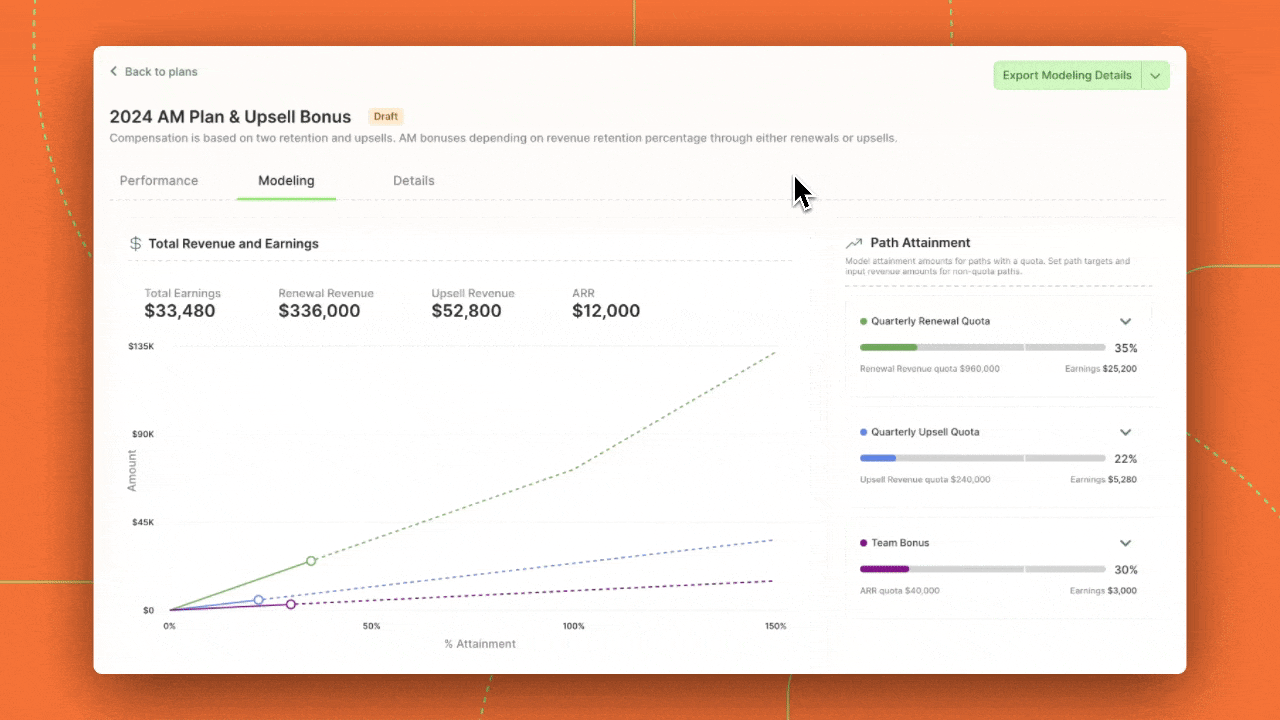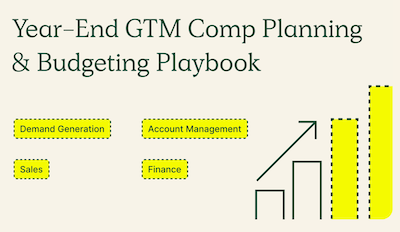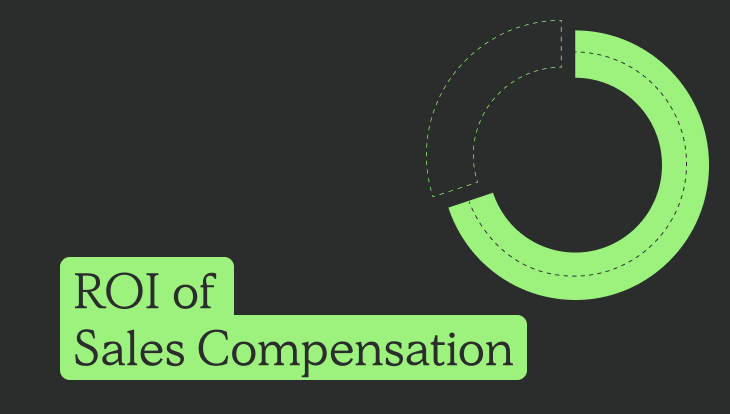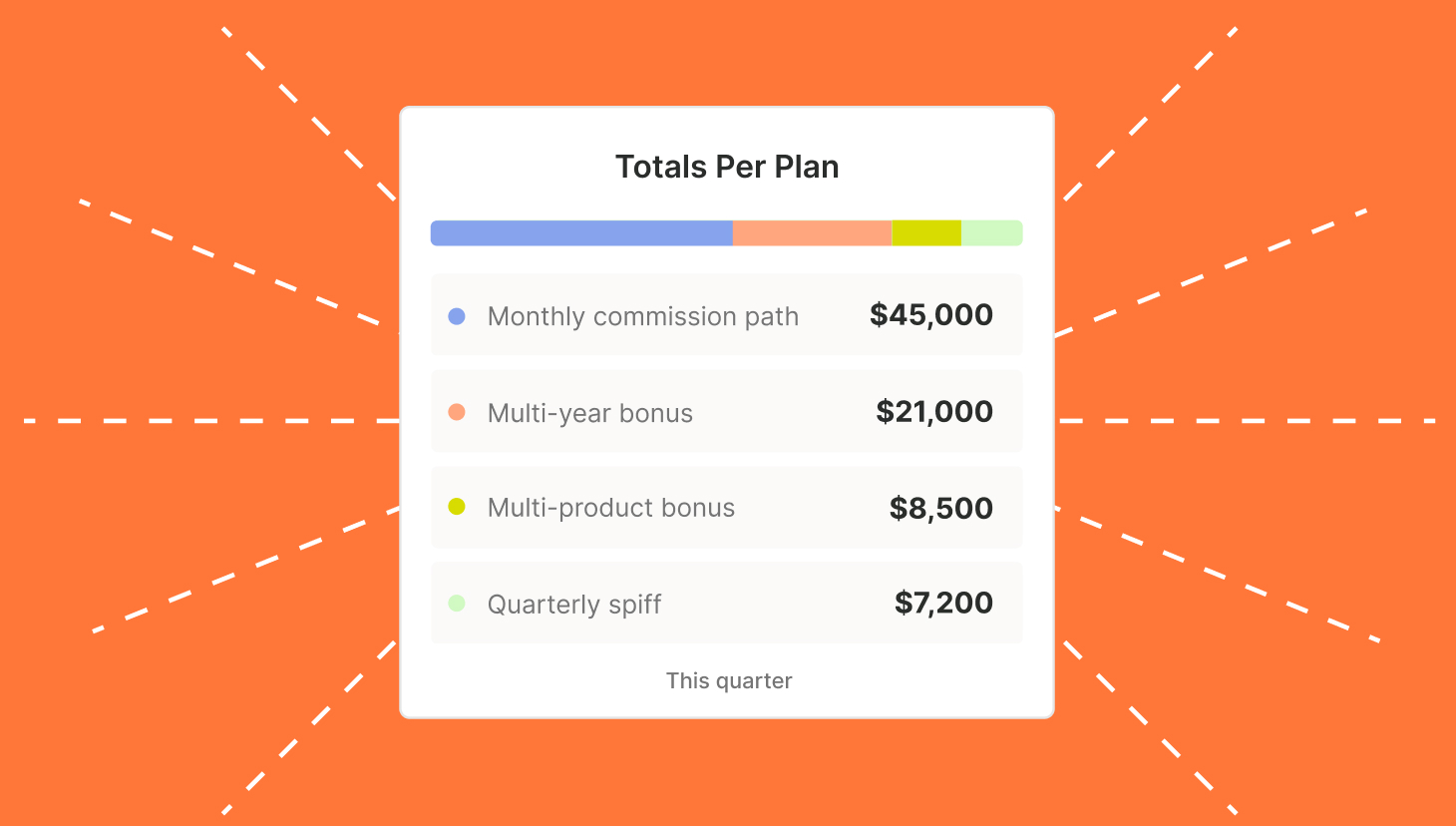Sales compensation is often an overlooked strategic lever, yet it’s one of the most influential elements impacting a company’s performance.
Poorly structured compensation can drive reps away, with our research showing that 9% of sales reps quit over disputes or errors related to compensation. Additionally, sales incentives that misalign with company goals can encourage deals that don’t add long-term value, leading to increased customer churn.
These issues arise from several pain points in traditional sales compensation models, including a lack of alignment with business objectives, opacity, and overly complex and demotivating compensation structures.
“You have to eliminate any disconnect between the business’s performance and your team’s performance,” said Ryan Milligan, QuotaPath’s VP of RevOps and Sales.
As companies seek efficient growth, outdated compensation plans can be a stumbling block.
However, a well-designed compensation plan can be transformative, providing a solid return on investment (ROI) by aligning sales incentives with business goals and empowering teams.
In this post, we’ll share how optimizing sales compensation benefits RevOps and Finance leaders, why QuotaPath is a crucial partner in this transformation, and how this investment ultimately drives financial growth.
Modernize to Optimize
The ROI of a strategic sales compensation model is multifaceted, from increased sales productivity to improved employee retention and enhanced revenue growth. By adopting a modern approach, companies can measure and optimize the financial impact of compensation on their bottom line.
The Financial Impact of Sales Compensation
A well-structured sales compensation plan directly impacts a company’s financial health.
By incentivizing desired behaviors and aligning sales goals with company objectives, a strong plan can boost sales productivity and increase revenue.
A competitive compensation package can also improve employee retention, reduce turnover costs, and ensure a stable sales force. Below, we unpack each of these.
Increased Sales Productivity
First, let’s discuss sales productivity.
A well-designed compensation plan is foundational to maximizing sales productivity. It determines how much reps are paid, influences their behavior, speeds up deal cycles, and can increase the average deal value.
The underlying principle is simple: when compensation aligns with desired sales outcomes, sales reps are naturally motivated to meet and exceed those expectations.
According to Alexander Group’s 2023 National Sales Compensation Survey, companies with a higher percentage of variable pay in their compensation plans—above 30%—reported a 23% higher win rate than those with lower variable components.
This statistic illustrates the direct impact that a strategically structured comp plan can have on performance outcomes.
Effective sales compensation planning also involves ensuring clarity and transparency, building confidence and driving reps’ productivity.
This clarity is one of the underlying principles that explain why we created QuotaPath.
We designed QuotaPath’s platform to support productivity by providing real-time visibility into commission structures and attainment progress. Here’s how these features drive sales efficiency:
Clear Breakdown of Commission Structures Per Deal
Reps see how each deal impacts their earnings through automated commission tracking. This allows them to prioritize deals that maximize their commission. This clarity ensures that salespeople focus on high-value opportunities and accelerate deal closing times.
Real-Time Views of Attainment and Earnings Progress
The ability to track earnings and forecast commissions in real time helps drive sales performance by keeping reps motivated and providing insights on how close they are to their next milestone or accelerator.
With a clear understanding of their position, reps are more driven to hit targets and close deals faster to reach their earnings goals.
Quick Resolution of Earnings Issues
Earnings disputes can be distracting and time-consuming. QuotaPath’s commission payout software allows reps to flag discrepancies, communicate quickly, and resolve issues in-app.
This results in improved accuracy, which saves operational time and minimizes the friction associated with commission disputes. For many teams, this has translated into a 50% reduction in time spent on commission management, freeing up operations teams to focus on strategic growth initiatives.

Scenario Modeling for New Compensation Structures
You can’t calculate the ROI of something without knowing the initial cost.
QuotaPath enables finance and RevOps teams to test and model various compensation scenarios before implementing them to understand cost. This capability ensures that comp plans align with team goals and budget constraints, allowing leaders to refine structures for maximum impact. Reps, in turn, benefit from realistic, motivating plans that align with company objectives.
Performance Tracking for Compensation Plans
QuotaPath’s tools provide insights into how each plan performs over time, helping RevOps teams measure the success of different compensation strategies and refine plans as needed. This ongoing optimization ensures that comp plans continue to drive intended sales behaviors and contribute to efficient growth.
Productivity naturally increases when sales reps are empowered with clear earnings visibility, streamlined processes, and responsive support.
Create Compensation Plans with confidence
RevOps, sales leaders, and finance teams use our free tool to ensure reps’ on-target earnings and quotas line up with industry standards. Customize plans with accelerators, bonuses, and more, by adjusting 9 variables.
Build a Comp PlanImproved Employee Retention
Next up: the ROI of sales compensation on employee retention.
Retention is a persistent challenge for sales organizations, and HubSpot says inadequate compensation is the top reason salespeople leave their roles.
Those of us in sales know how costly this can be.
Studies estimate that replacing a single sales rep can cost 1.5 to 2 times their annual salary when factoring in recruiting, onboarding, and lost productivity as new reps ramp up.
The key to mitigating turnover is a compensation plan that is both fair and motivating.
When sales reps feel their efforts are rewarded and understand how to reach their earnings targets, they are more likely to remain engaged and satisfied.
For many companies, an effective retention-focused compensation plan includes clear, attainable targets and a transparent structure. Communicating the comp plan, such as explaining the why behind the math and offering resources and support to meet their goals, also helps with rep retention.
This way, reps feel confident that they can achieve their quota and understand the specific actions needed to maximize earnings.
The QuotaPath Approach
QuotaPath’s approach emphasizes simplicity and transparency in compensation.
The platform offers clear views into earnings potential, commission structures, and attainment progress, allowing salespeople to monitor their own progress toward quota. This level of visibility empowers reps to take ownership of their performance and income, reducing frustration and fostering long-term loyalty.
Enhanced Revenue Growth
Effective sales compensation isn’t just about paying for performance; it’s also a growth driver.
Sales leaders can directly impact revenue by aligning compensation with company goals and providing flexibility to adjust as priorities shift.
For this, we point to QuotaPath customer, Everview.
Everview reported a record sales year after integrating QuotaPath, attributing part of this success to reps’ ability to use “what-if” scenarios to manage acceleration opportunities and forecast earnings.
Blackthorn reps, too, took advantage of forecasting earnings in QuotaPath by identifying which deals at the end of the month accelerated them toward their next kicker and then focusing on bringing those in.
By aligning sales activities with strategic objectives, companies can ensure efficient and sustainable growth.
“You can start by identifying the most important metric that will move the needle for your business next year, and then one-by-one creating components of your comp plan that directly support and drive that metric,” Ryan said.

How to Align Your Comp Plans to Broader Company Goals
500 revenue leaders found that 25% identified “alignment to business goals” as the top area needing improvement in their sales compensation management process.
Read MoreCalculating the ROI of Sales Compensation
Investing in sales compensation is more than allocating funds to reward performance—it’s about ensuring that the structure and management of these incentives yield measurable returns.
For RevOps and Finance leaders, calculating the ROI of a sales compensation investment involves analyzing how the strategy impacts productivity, costs, and overall revenue outcomes. To gauge the potential ROI of a sales compensation strategy, let’s start with a straightforward estimation framework.
A Simplified Framework for Estimating Sales Compensation ROI
To evaluate ROI, RevOps and Finance leaders can use this basic formula:
ROI = (Revenue Gains + Cost Savings – Investment Cost) / Investment Cost
Here’s a breakdown of what each component might include:
- Revenue Gains: Increases in revenue directly attributable to a compensation strategy, such as higher deal values, shorter sales cycles, and improved rep performance.
- Cost Savings: Reductions in administrative time, error handling, and hiring/training costs as a result of efficient compensation management.
- Investment Cost: The total cost of implementing the new strategy, including software expenses, any consulting fees, and time spent on plan design and execution.
This framework allows teams to clearly see how sales compensation enhances revenue and reduces operational expenses, contributing to a stronger bottom line.
Key Metrics to Track for Measuring ROI on Sales Compensation
To make informed decisions, tracking the right metrics can clarify the impact of compensation on company performance. Here are some key metrics:
- Cost per Hire: Calculating the cost per hire for each sales rep provides insight into the financial impact of turnover. By using an effective compensation plan, companies can reduce turnover and, consequently, the cost per hire, as engaged reps are more likely to stay longer.
- Sales Cycle Length: A well-structured comp plan motivates reps to close deals faster. By tracking any reductions in sales cycle length, companies can measure the effectiveness of their compensation strategy in driving quicker revenue. For instance, QuotaPath clients, like Muck Rack, found that reducing commission processing time from five days to six hours kept reps focused on selling, ultimately improving deal velocity.
- Revenue per Rep: This metric indicates each rep’s average revenue, providing a direct measure of compensation effectiveness. With QuotaPath’s real-time visibility features, reps gain clarity into their earnings progress, helping them prioritize high-value deals and maximize their revenue potential.
- Administrative Costs for Commission Management: Automating commission management with tools like QuotaPath can lead to considerable savings in administrative costs. For example, QuotaPath clients have reported up to a 50% reduction in time spent managing commissions. This frees up resources, allowing Finance and RevOps teams to focus on higher-value tasks rather than manual calculations and error handling.
- Rep Performance and Attainment Lift: QuotaPath helps boost rep performance by providing real-time insights into their commissions. This transparency lets reps see how their actions impact their earnings, driving motivation and improving quota attainment.
Streamline commissions for your RevOps, Finance, and Sales teams
Design, track, and manage variable incentives with QuotaPath. Give your RevOps, finance, and sales teams transparency into sales compensation.
Talk to SalesMeasuring and Maximizing ROI with QuotaPath
Investing in a well-designed sales compensation strategy is powerful for any business seeking to drive growth and improve financial performance.
By aligning sales incentives with company goals, companies can boost sales productivity, improve rep retention, and optimize revenue outcomes. Tracking metrics like revenue per rep, sales cycle length, and administrative costs allows RevOps and Finance leaders to quantify the return on investment in sales compensation and continuously refine their strategy for maximum impact.
QuotaPath is here to help you with a platform that adapts, simplifies, and enhances sales compensation management, leading to measurable ROI.
To learn more, schedule time with our team.



